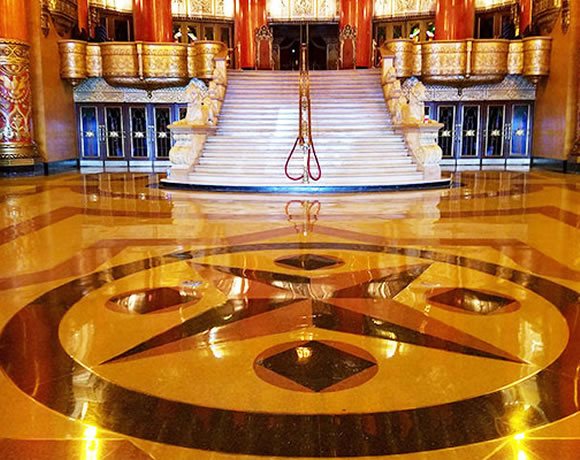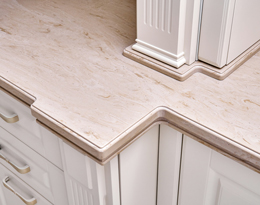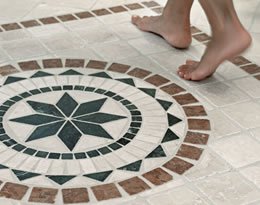Historic Property Preservation – Detroit, Southeast Michigan
Historic Property Restoration and Preservation
Historic natural stone, tile, and masonry, such as floors and walls, architectural features, statues, fountains, monuments, and the like can become damaged with use or exposure to the elements. When professional attention is necessary, it is important to select a qualified contractor who not only has the knowledge, skills, and training to work with your natural stone, tile, or masonry, but who also understands historic conservation methods and employs responsible preservation practices. At Stone Restoration Services, we do our research and ask the appropriate questions to gain a clear understanding of our client’s expectations before we write specifications or prescribe treatments for historic surfaces. Then, we perform the work according to the plan, and in most cases, we are able to achieve the desired outcome for your marble, granite, travertine, slate, onyx, limestone, and more.

Four Approaches to Historical Stone Restoration
We can customize our services to address concerns and resolve problems while staying within the standards addressed by the Secretary of Interiors Standards for the Treatment of Historic Properties. These standards specify four approaches, beginning with the gentlest means possible and progressing to more aggressive methods:
PRESERVATION
Preservation emphasizes repair and maintenance of the surface as it is rather than restoring or reconstructing it to its original appearance.
REHABILITATION
Rehabilitation recognizes that in order to accommodate continued or new use, a surface may need to be repaired, altered, or added to without altering the historic character of the surface. Of the four approaches, this is the most flexible.
RESTORATION
Restoration means accurately depicting the character of a surface as it appeared at a particular historical time period. It may involve removing added features or reconstructing missing features.
RECONSTRUCTION
Reconstruction involves new construction of non-surviving portions of a surface to replicate its appearance at a particular historical time period.
To aid the reader’s understanding of these approaches, we will use a hypothetical polished terrazzo floor as an example. Suppose the floor has developed a patina over time. One area has minor damage, say, a small chip. Another area has some pretty major damage, for example, a section of terrazzo is missing. The original floor had a honed finish, but back in the 1950s someone had it polished. The now-polished terrazzo is covered with fine scratches, dirt, and scuff marks.
To preserve this terrazzo floor, our goal would be to remove the dirt and scuff marks. We might begin by cleaning with plain water, and if necessary, use a professional pH-neutral cleaner or a mild alkaline solution and a soft bristle brush. We would make no attempt to remove the scratches, repair damage, or replace the missing terrazzo.
To rehabilitate this terrazzo floor, we would first attempt to achieve the desired result using the gentlest means possible. If the outcome were not acceptable, we might lightly hone the terrazzo, removing only .0008 inches of material (an insignificant amount). This would remove the 1950s polish and make the appearance of the floor more closely resemble that of the original historical appearance. We would make no attempt to repair damage or replace the missing terrazzo.
To restore this terrazzo floor, we might clean and lightly hone and use tinted filler and matching aggregates (historically accurate mixes) to fill in the small chip. We would make no attempt to replace the missing terrazzo.
To reconstruct this terrazzo floor, we would clean, hone, and repair the chip, but regarding the major damage, we would likely either consult with a stone conservator, depending on the difficulty level, availability of appropriate materials, etc., or refer the client to a stone conservator.
Our Experience
We have had exceptional success in restoration, preservation, and conservation projects, because we have a clear understanding of the outcomes, methods, and materials required. We specialize in all types of natural stone: Marble, granite, travertine, slate, onyx, limestone, and more.
One of our past projects was the creation of a historical museum from a house that once belonged to a couple, legendary in their field of discipline. This project involved several different approaches to historical stone restoration. The goal of the project was to restore the house environment to its prime historical period, which involved restoring and preserving some pieces and conserving others.


Diagnosing Problems
Exposure to water or moisture, light, chemicals, foot traffic or use, and other factors can have a negative affect on natural stone, tile, and masonry surfaces. The most common problems are the accumulation of dirt and grime, scratches, dullness, chips, and cracks. Here are other problems you may encounter:
- Efflorescence is a deposit of soluble salts on the surface. It appears as a powdery white haze.
- Subflorescence is a potentially harmful accumulation of soluble salts under or just below the surface. Once pressure buildup is sufficient, spalling or delamination may occur.
- Spalling is a breaking off of the surface layer.
- Delamination is a peeling of the surface layer.
- Detachment is cracking that has turned into a clean break.
- Sugaring is a granular disintegration of the surface.
- Weathering is roundness, smoothness, or loss of detail.
To properly preserve, repair, or restore historic natural stone, tile, and masonry surfaces, a careful study of the building or object is necessary. Our highly trained technicians consider many factors from the historical significance, architectural drawings or blueprints, and environmental conditions to the substrate, the extent of damage, how long the damage has been present, and how rapidly deterioration is happening to what kind of maintenance, if any, has been done, and other factors.
Providing Solutions
At Stone Restoration Services, we employ the most appropriate methods to resolve historic natural stone, tile, and masonry problems. We always protect the surfaces surrounding our work area. Following are some of the solutions we use.
- Cleaning with plain water, in some cases, can be very effective for safely removing dirt and stains. Whether we are wiping, gently flushing, or using a low-pressure continuous spray, we always use great care.
- Cleaning agents are used only when plain water will not suffice. Our cleaning solutions may include organic surfactants, pH-neutral cleaners, and alkaline or acidic cleaners followed by neutralizers.
- Abrasives are usually avoided. On the rare occasion that we feel an abrasive may be necessary, we will consult with other experts for confirmation and guidance.
- Crack repair may involve stabilizing the crack to prevent further damage and/or doing cosmetic repairs.
- Chip and hole patching is performed using historically accurate filler mixes and painstaking precision to blend the repaired area with the surrounding surface.
- Replacement is using materials matching as closely as possible to the surrounding surfaces. Replacement services are performed under the guidance of a stone conservator.
Special Considerations
Historic buildings are notorious for developing structural problems, plumbing failures, and other age-related problems. Sometimes we make recommendations for extraneous problems to be resolved prior to doing our work. For example, if a building has a moisture problem that is causing efflorescence, the moisture problem must be resolved first, and then the efflorescence problem can be resolved afterward. If we removed the efflorescence only, the problem would just reoccur.
Most historic stone surfaces were not originally polished, they were installed with a honed finish. Any sheen or polish was achieved by waxing the floor with a natural wax, such as bee’s wax. Today, the use of these waxes are not appropriate. However, it is acceptable to use a polymer type coating to emulate the wax finish, if desired.
Each historic natural stone preservation job has unique outcomes, methods, and materials. There is no such thing as an “average cost” in this type of work. Numerous potentially time-consuming challenges may be involved. At Stone Restoration Services, we are experienced, well-trained, and knowledgeable about the inherent properties of natural stone, tile, and masonry, as well as the particular floor and surface problems associated with historic properties. We take the time to provide control samples and mock ups as needed, thoroughly explain what the project will entail, and answer all your questions.
We urge owners, collectors, or managers of historic property to choose your contractor wisely. You can count on Stone Restoration Services, not only for successful restoration, preservation, and conservation services, but also for a stress-free experience that includes technical support, streamlined project management, and exceptional customer service.
Contact us to discuss your historical preservation needs.
If you are in the Southeast Michigan area or any of the other areas we service, contact us online or call (248) 220.1672. Let’s discuss your needs.













